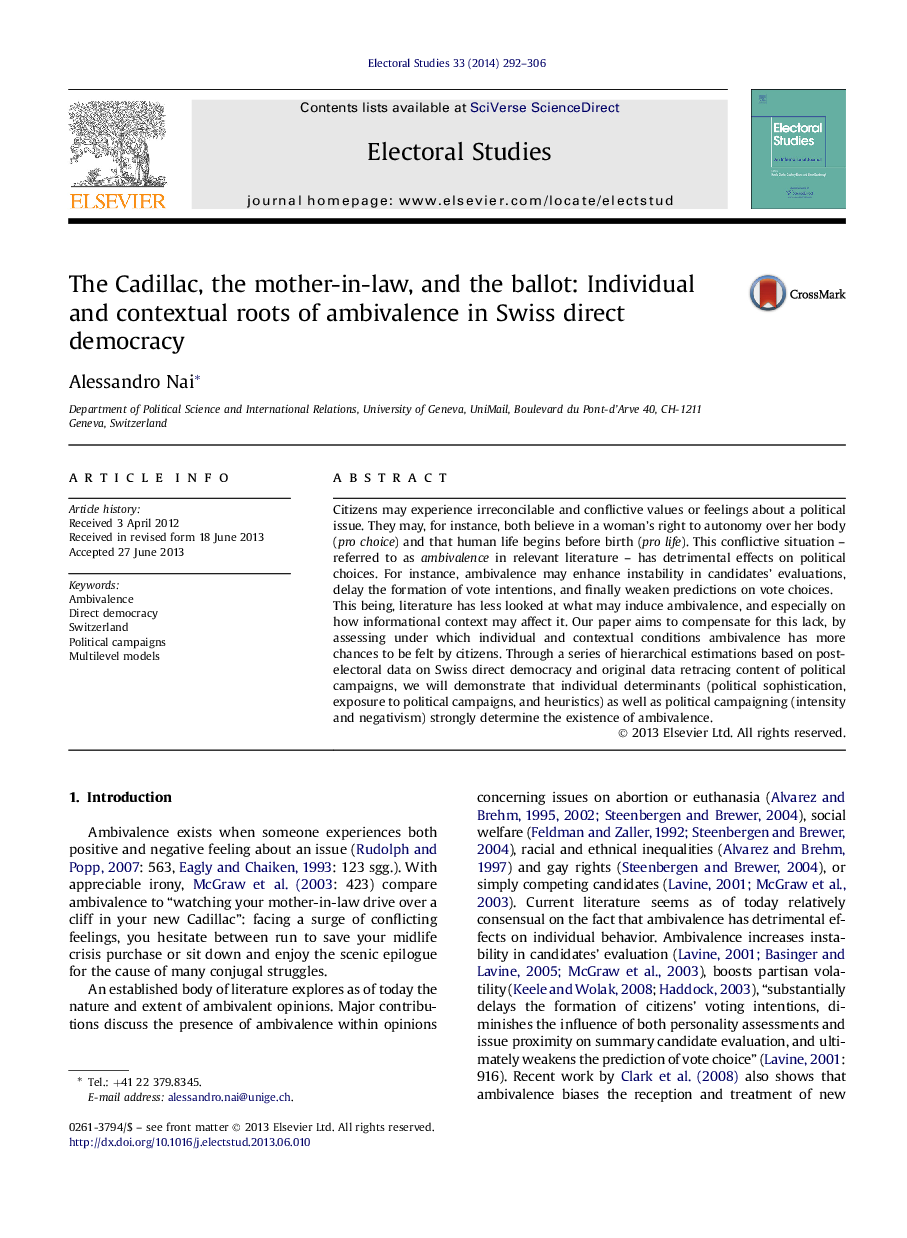| Article ID | Journal | Published Year | Pages | File Type |
|---|---|---|---|---|
| 1051911 | Electoral Studies | 2014 | 15 Pages |
•We explain ambivalent opinions during Swiss direct-democratic ballots.•Ambivalence is higher for low sophistication and high exposure to information.•Ambivalence is higher for those who activate referential heuristics.•Ambivalence decreases with intense campaign and increases with high negativism.•An empirical appendix (data and measures) is provided.
Citizens may experience irreconcilable and conflictive values or feelings about a political issue. They may, for instance, both believe in a woman's right to autonomy over her body (pro choice) and that human life begins before birth (pro life). This conflictive situation – referred to as ambivalence in relevant literature – has detrimental effects on political choices. For instance, ambivalence may enhance instability in candidates' evaluations, delay the formation of vote intentions, and finally weaken predictions on vote choices.This being, literature has less looked at what may induce ambivalence, and especially on how informational context may affect it. Our paper aims to compensate for this lack, by assessing under which individual and contextual conditions ambivalence has more chances to be felt by citizens. Through a series of hierarchical estimations based on post-electoral data on Swiss direct democracy and original data retracing content of political campaigns, we will demonstrate that individual determinants (political sophistication, exposure to political campaigns, and heuristics) as well as political campaigning (intensity and negativism) strongly determine the existence of ambivalence.
